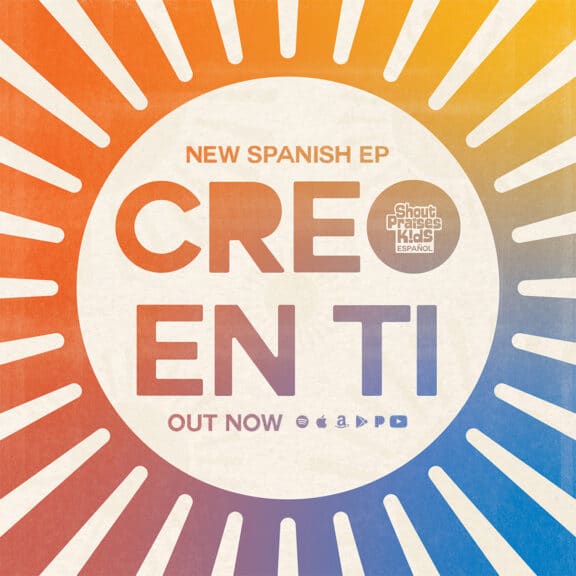THE BASICS FOR LEADERS
Supplies
This is a simple story—and a richer one when you have some background. In Jesus’ day, pearls were far more expensive than they are today. There were no pearl farms or cultured pearls; each pearl had to be found in nature and imported.
The Romans were especially fond of pearls, and a large, perfect pearl was considered a vast treasure. The Roman historian Suetonius reported that General Vitellius financed a Roman military campaign by selling just one of his mother’s pearl earrings!
So when Jesus painted the word picture of a merchant sorting among pearls and finding one that’s superior—a perfect pear—his audience understood the merchant’s excitement and perhaps the merchant’s willingness to give up everything to own the treasure.
Today you’ll help your children discover that meaning behind Jesus’ story, that there is something worth their time, devotion, possessions. That’s far more valuable than anything else.
Jesus is worth everything!
OPENING ACTIVITY
Option 1: Howzitgoin’
Supplies
- Pencils
- Prepared poster
Before kids arrive, draw a line on a poster. Place a 1 on the left end of the line, a 10 on the right, and a 5 in the middle. As kids arrive, ask them to pencil in their initials on the line.
Say: If this past week was so awful you wish you’d slept through it, place your initials by the 1. If it was a great week you wish you could repeat, put your initials by the 10. Place your initials anywhere on the line that shows how you feel about this past week—except exactly on the 5. That’s because there’s no such thing as a week that’s exactly half good and half bad!
After kids have signed in, give them 30 seconds each to explain why they placed their initials where they did. Be sure to include your own initials and explain your placement on the line. Kids will begin to express themselves more over time—and hearing their stories will help you adapt this lesson to make it relevant to your kids’ lives.

Option 2: Better and Better
Supplies
- Junk drawer stuff (such as old keys, buttons, batteries)
Empty out the junk drawer and invite children to each take an object they especially like. Tell children they’ll give the items back though!
Say: Look carefully at the item you chose. Think about how you might use it and why it’s worth more than the items you didn’t take. (pause)
After a few moments, say: In the next three minutes, trade your item for something even better. Maybe you’ve got a button—hugely helpful if one pops off your shirt as you’re about to give a report at school. But someone else has a battery, which you could use to power up a small transmitter to call the coast guard if your ship is about to sink. So see if you can trade your button for the battery. Try hard to make someone else trade. Go!
After three minutes, have kids sit in a circle. Ask anyone who made a trade to explain why what he or she got was better than what was traded. Identify the item that was most traded. Ask kids to tell what their friends said to make them trade.
Collect the items and return them to the drawer. Say: One thing that makes an item especially desirable and valuable is if the item is rare. Today we’ll explore a story Jesus told about an item that was so valuable that a man went home and sold everything he owned to come up with enough money to buy it!
COOL STORY GAME
Carry On
Supplies
- 10 rolls of toilet tissue
Time for a trip to the discount store! You’ll need at least ten rolls of toilet tissue for this game, but the rolls will be in usable shape after the game.
Place the rolls in two stacks of five rolls on one side of your room. Form your kids into two equal teams (join in if necessary to even up teams) and place one team by each stack of toilet tissue.
Say: Let’s say you’re shipwrecked on a deserted island—one that has lots of fresh water, plenty of food, tons of fish waiting to be caught, and a long, beautiful beach. It’s a perfect place to be stuck except for one detail: you have no toilet tissue.
So your goal is to carry five rolls to the far wall and back again—delivering it to the needy people there on Uncomfortable Island. To carry the rolls you must hold all five rolls across, touching only the rolls on the ends. Demonstrate how to hold and carry the rolls.
Say: This is a relay race and time is key. Looks like some of your friends on the island are hopping around hoping you show up soon!
After the race, discuss:
- What else would you miss if you were stuck on an island like I described?
- What’s the most expensive item you’ve ever bought with your own money? Why was the item worth the cost to you?
- If you could sell everything you own and buy just one thing—would you do it? What would the thing be and why?
Say: Let’s dig into a story that Jesus told about a man who gave all he had to own a pearl—one perfect pearl. Let’s find out what happened.


COOL BIBLE STORY
Pennies and Pearls
Supplies
- Bible
- 1 dull and 1 shiny penny for each child
Ask children to sit in a circle. Give each child a dull penny, but keep the shiny ones in your pocket. Say: In a few moments I’ll be telling you about a merchant who bought a pearl. Before I do, though, you need to become pearl merchants yourselves. You need to learn how to tell a regular pearl from a good pearl, and a good pearl from a great pearl. We’ll practice on the pennies I’ve given you.
Ask children to examine their pennies. Say: Five things make a great pearl. Look at your pennies to see how they stack up in each category.
Category 1 is SHAPE. In nature, very few pearls come out of an oyster round. They’re lopsided. The more round a pearl, the better. Look at your penny. Is it round? If so, you’ve got the start of a top-notch pearl!
Category 2 is SIZE. In pearls, the bigger, the better—if the pearl scores well in other categories. I’m assuming all your pennies are the same size, but check with your neighbor. If yours is larger than average, that’s a good thing!
Category 3 is COLOR. Pearls come in many colors, with pure white being the most valued. Look at your pennies. Is your penny shiny and bright, or dull? If it’s bright, your “pearl” is worth more. With pearls, the brighter, the better.
Category 4 is LUSTER. Oysters secrete calcium-carbonate crystals to cover specks of dirt or other irritants. That’s what makes a pearl. If there are lots of layers of crystals and they’re worn smooth, that’s luster. Does your penny reflect the light well? Is it smooth, or worn out and pitted?
Category 5 is called ORIENT. If you can look at a pearl and it almost seems to glow from the inside, it has “orient.” It’s a matter of light refracting from the various layers. Does your penny glow? I’m guessing not—but maybe it does.
Hold up your pennies. If they were pearls, they’d be worth different amounts because of the things I’ve mentioned. Now imagine you made your living buying and selling pearls. You’d get very good at telling one pearl from another and knowing which one was worth the most.
Jesus’ story is about a pearl merchant. He probably looked through handfuls of pearls, looking for those that would get the best price. And then, one day, he spotted this. Hold up a bright new penny. Say: He knew he had something special. Here’s what Jesus said he did.
Read aloud Matthew 13:45, 46. Then discuss:
- Why do you think the merchant was eager to get the perfect pearl?
- What do you think the pearl stands for in this story?
- Where do we fit into the story?
Say: We’re like the pearl merchant. We give our lives to a lot of things—but only one is perfect and that’s Jesus. We can give him our old, worn-out lives and he gives us new life. New life that lasts forever!
Ask children if they want to trade their dull, less-than-perfect pennies for the shiny ones you have. Trade, and let them keep the shiny ones.
Say: That’s what we can do with our lives: give them to Jesus and get shiny, new lives. Let’s give ourselves to Jesus because Jesus is worth everything!
CLOSING PRAYER
Personal Pearl Prayer
Ask children to stand in a circle, facing in, and join them. Say: Jesus is worth everything—no question about it. But Jesus said there was something else nearly as valuable as himself. Something so important that he was willing to go through death to save it. And that’s you.
You’re a pearl of great price too, and so are the people to your left and right. Look at them and think this: The King of the Universe came and died in their place on a cross so they can be his friends. That’s how important those people are and how precious they are to God. So let’s silently pray for each other now. I’ll start and finish—you silently fill in the middle of our prayer time.
Pray: Dear God, thank you for your love. And for loving us so deeply that you gave your Son to rescue us. That’s amazing, God, and we praise you for it.
Hear our prayers as we pray for the people standing on our right. (pause) And hear our prayers as we pray for the people standing on our left. (pause) You’re so good, God. We love you. Amen.

EXTRA-TIME ACTIVITY
Option 1: Pearl Pricing
Supplies
- Calculator
- 1 sheet of paper and 1 pencil per child
This activity is best suited for older kids who are good at multiplying very large numbers! You may wish to do this activity together using a calculator instead of old-fashioned multiplication.
Give each child a sheet of paper and a pencil. Say: The largest—and most expensive—pearl is the Pearl of Lao Tzu. (Good luck pronouncing that!) It weighs 14.1 pounds and is valued at nearly $60 million. Let’s round that off to 14 pounds at $60 million . . . or $4,285,714.29 per pound. We’ll round that off to $4,286,000 per pound—write that down. Help younger children write the amount.
Here’s my question: using pearl pricing, what are you worth? Multiply your weight in pounds by $4,286,000, and let’s see what you’re worth. You don’t have to share the total—but do take a look at that number! If you get stuck, I’ve got a calculator to use, and I’ll help.
After numbers are totaled, as a group discuss:
- What would you do with that much money?
- What can Jesus do for you that the Pearl of Lao Tzu can’t do?
Option 2: Price Tags
Supplies
- 1 sheet of paper and 1 pencil per child
- Watch with a second hand
Ask children to tear their paper into ten or twelve pieces. Say: In a few moments I’ll ask you to quickly put a price tag on everything in this room. Write down what you think the item is worth and place the tag on or near the item. Then move along to the next item, because you’ve got to go through all your price tags in just 72 seconds! If there’s already a price tag on an item, find something that hasn’t yet been priced. (If you have younger kids, consider pairing them with older kids as they price their items.)
Start the timer and set kids free. When 72 seconds have gone by, have kids sit down in a circle. Collect pencils and extra price tags. Walk around the room and announce some of the estimates, asking whoever wrote the amount to defend his or her estimate. Have fun with this!
Come back to the circle and say: I’m not sure what anything in this room is worth except for a very few items. And those I can price exactly.
Walk around the circle touching each child’s shoulder in turn and addressing the child by name, such as, “Frank, you are priceless.” Explain that priceless means they’re so valuable, there’s no number big enough to use for their price tags.
Say: How can I know you’re worth so much? Because Jesus is beyond price, and he chose to come to earth and die on the cross in your place. He finds you so valuable that he was willing to go through death for you. That’s how much you’re worth. That’s how much God loves you.
Option 3: Inquiring Minds Want to Know
Gather kids in a circle. Ask: Jesus is worth everything. He’s a pearl beyond price. Great—but how does that change how you’ll live tomorrow?










